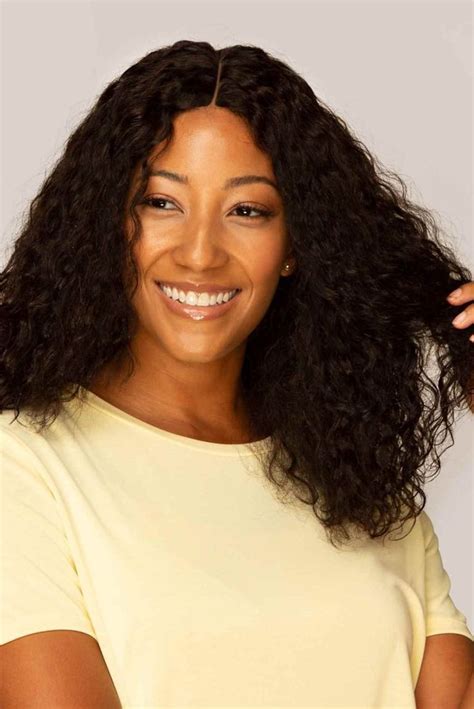The Wig Market and the Rise of Natural Hair Wigs
The global wig market is projected to reach a staggering $12.1 billion by 2026, according to a report by Fortune Business Insights. This growth is largely attributed to the increasing demand for natural hair wigs, which offer a seamless and realistic look.

Pain Points: Why Women Are Turning to Natural Hair Wigs
- Damaged hair: Chemicals, heat styling, and environmental factors can take a toll on hair, leading to breakage and thinning.
- Hair loss: Medical conditions, hormonal changes, and genetics can contribute to hair loss, affecting self-confidence.
- Styling challenges: Achieving a desired hairstyle can be time-consuming and often requires expensive salon treatments.
- Cultural and societal pressures: In some cultures, hair is a symbol of beauty and identity, and not meeting certain standards can lead to social stigma.
Motivations: What Drives Women to Embrace Natural Hair Wigs
- Protection: Natural hair wigs provide a protective barrier against damaging elements, allowing hair to grow and recover.
- Convenience: Wigs offer an easy and versatile way to change hairstyles without the hassle of styling or cutting hair.
- Self-expression: Natural hair wigs enable women to explore different looks and express their individuality freely.
- Medical necessity: For individuals undergoing cancer treatment or experiencing hair loss due to medical conditions, wigs provide a comfortable and stylish solution.
Effective Strategies: Finding the Perfect Natural Hair Wig
1. Determine Your Hair Type and Texture
Match the wig’s hair type and texture to your own, considering factors such as curl pattern, porosity, and density.
2. Choose a Cap Construction
Select a cap construction that provides a secure and comfortable fit. Lace front and monofilament caps offer a natural-looking hairline.
3. Consider Length and Volume
Choose a wig length and volume that complements your face shape and body proportions. Consider whether you want a subtle or more dramatic look.
4. Select a Color and Highlights
Match the wig’s color to your natural hair or experiment with highlights to add depth and dimension.
5. Try Before You Buy
If possible, try on different wigs to find the best fit and style for your needs and preferences.
Step-by-Step Approach: How to Put on a Natural Hair Wig
1. Prepare Your Hair:
* Braid or wrap your natural hair to keep it secure and prevent tangles.
* Apply a wig cap to create a smooth base.
2. Place the Wig:
* Position the wig on your head, ensuring the hairline aligns with your natural hairline.
* Secure the wig using adjustable straps or clips.
3. Style and Blend:
* Style the wig as desired using heat tools or brushes.
* Trim any excess lace or hair around the hairline for a seamless blend.
4. Care and Maintenance:
* Wash and condition the wig regularly using products specifically designed for synthetic or human hair.
* Store the wig on a wig stand or in its original box when not in use.
5. Treatment:
* Apply hair oils or masks to keep the wig healthy and prevent dryness or breakage.
Creative New Word: “Wignature”
Wignature encapsulates the unique identity expressed through a natural hair wig. It reflects the fusion of personal style, self-expression, and the transformative power of wigs.
Tables: Useful Information for Natural Hair Wig Users
Table 1: Types of Cap Constructions
| Cap Construction | Description |
|---|---|
| Lace Front | Thin, transparent lace that creates a natural-looking hairline |
| Monofilament | Sheer mesh that mimics the scalp and allows for partings |
| Weft | Fabric strips sewn together with hair strands attached |
| Baseball | Adjustable elastic band that provides a secure fit |
Table 2: Hair Types and Textures
| Hair Type | Texture |
|---|---|
| Remy | Human hair that retains the natural hair cuticle |
| Kanekalon | Synthetic hair with a natural-looking texture |
| Yaki | Japanese synthetic hair with a coarse, textured feel |
| Curl | Tight to loose curls |
| Wavy | S-shaped waves |
| Straight | Smooth, non-curly hair |
Table 3: Wig Length and Volume
| Length | Volume |
|---|---|
| Short | Below shoulder length |
| Medium | Shoulder length to mid-back |
| Long | Mid-back length to waist |
| Extra Long | Waist length and longer |
| Thin | Minimal hair volume |
| Medium | Moderate hair volume |
| Thick | High hair volume |
Table 4: Wig Care and Maintenance
| Task | Frequency |
|---|---|
| Wash | Every 6-8 wears or as needed |
| Condition | Every 2-3 washes |
| Brush | Daily or as needed to prevent tangles |
| Treat | Monthly or as needed with hair oils or masks |
| Store | On a wig stand or in its original box when not in use |
